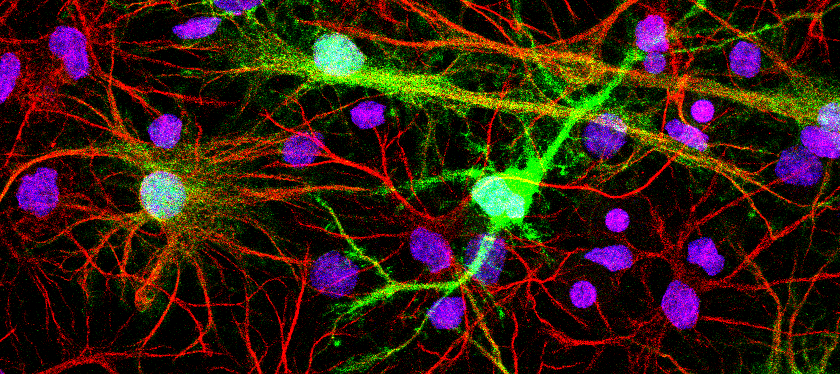Research
Overview
Addiction is characterized as a chronic neurodegenerative disease because a defining feature of the illness is a persistent vulnerability to relapse. The brain is designed to associate salient stimuli of positive or negative valence with the cues that predict these events in order to facilitate adaptive learning. In the addicted brain, it has been proposed that these normal learning systems are misappropriated resulting in the disease state. Chronic drug use results in a variety of maladaptive neuroadaptations that set the stage for drug relapse even after protracted abstinence periods. It is our hope that a better understanding of the trajectory of the neuroplasticity, physiology, neurochemistry, and behavior over the course of the development of relapsing-remitting addiction will aid in the rational design of new, more effective treatments for drug addiction.
Drug and other behavioral addictions share many common features and are often thought of as disease variants derived from a single common pathology. Indeed, over the past 50 years several unified theories of addiction have been posited with each adding to our understanding of the addiction process. Importantly, however, there is an appreciable divergence between different classes of abused drugs in terms of the psychological, neurobiological, and behavioral effects. For example, there are opposite synaptic and structural plasticity changes in the nucleus accumbens following withdrawal from psychostimulants versus opiates with the former producing potentiation and the latter resulting in synaptic depression. We feel that it is important to extend our addiction models to the study of these different classes of abused drugs beyond the prototypical stimulant cocaine as well as investigate relevant poly-drug use to gain a better understanding of the similarities and differences. In this way we may come closer to characterizing a convergent set of biological endophenotypes that exemplify addiction.
As a postdoctoral fellow, Dr. Spencer worked to develop innovative animal models to study neuroplasticity and behavior across various stages of addiction and relapse. We know that for cocaine both intrinsic excitability and excitatory synaptic strength is dynamically regulated in nucleus accumbens medium spiny neurons by chronic treatment, withdrawal, and re-exposure. Surprisingly, earlier research has largely failed to consider the impact of voluntary resumption of drug intake during relapse on plasticity, which our model allows us to do. It remains to be seen what impact repeated drug relapse events might have on circuit function or long-term treatment outcomes.
In the Spencer lab we have a broad interest in studying mechanisms related to the development of addiction as well as relapse in the late stages of the disease. We also want to better understand risk factors and psychiatric comorbidities associated with drug addiction. We are currently pursuing studies in two general broad project areas (outlined below). New graduate students and postdocs candidates with interests in these areas should contact Dr. Spencer.
Project 1: Examination of dopamine and glutamate interactions during cue-induced cocaine seeking and taking
Cue-induced transient synaptic plasticity (t-SP) at glutamatergic synapses on nucleus accumbens core medium spiny neurons occurs within 15 minutes and disappears within 2 hours. We have shown that cocaine taking after initiating cue-induced reinstatement rapidly reverses cue-induced transient synaptic plasticity in the accumbens, and demonstrates just how dynamic these neuroadaptations are within a modified 2-hour reinstatement session. Our results support a correlation between t-SP and motivated lever pressing and raises the possibility that cocaine-induced increases in extracellular dopamine may suppress t-SP.
Project 2: Repurposing an approved drug to target the aMPK pathway for treating cocaine relapse.
We have initiated a behavioral pharmacology study investigating the potential of repurposing metformin, a type II diabetes drug, for cocaine relapse. Metformin was selected as an indirect activator or adenosine monophosphate-activated protein kinase (AMPK). We aim to confirm (or disprove) AMPK as the target of metformin’s action for decreasing cocaine relapse. If disproven, additional experiments will be aimed at identifying a novel target. Regulation of AMPK activity has already been demonstrated as a promising target for nicotine withdrawal and cocaine relapse so we additionally propose to test additional more selective pharmacological activators and employ other genetic strategies to validate this mechanism and determine its specificity.
Project 3: Understanding distinct and overlapping neural circuits encoding the rewarding versus the aversive properties of cannabinoids.
Tetrahydrocannabinol (THC) is the most widely used illicit drug worldwide, but enduring consequences of its use, especially in terms of neurobiology, are largely unknown. The drug displays a narrow dose reward window, but produces enduring neuroadaptations following chronic self-administration that resemble other drugs of abuse. Understanding how both reward and aversion are encoded with use of this drug will help guide development of therapeutics for treating cannabis use disorder as well as designing non-addictive cannabinergic therapies for disorders like chronic pain.
“All sorts of things can happen when you’re open to new ideas and playing around with things”

